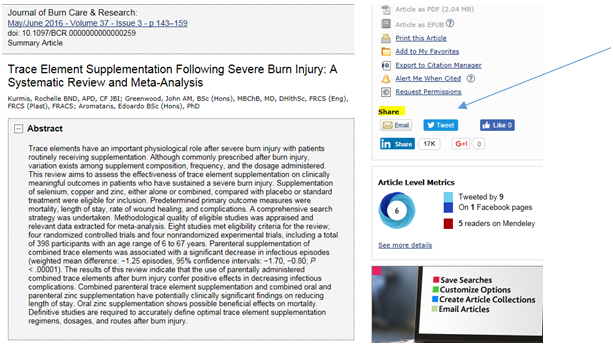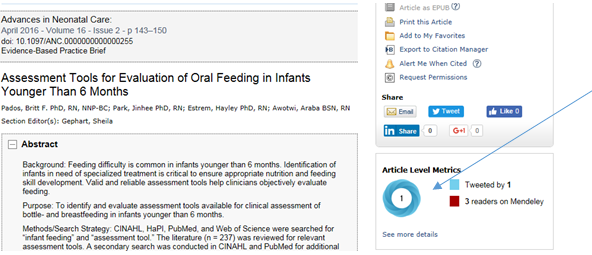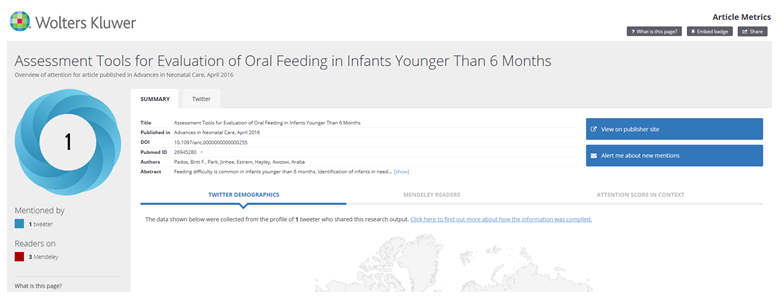What better way to celebrate the Nobel Prize than talking to a Nobel Laureate! We met with Dr. Takaaki Kajita, the Japanese Physicist who won the Nobel Prize in 2015 (jointly with Arthur McDonald) for the discovery of neutrino oscillations. This discovery, which shows that neutrinos have mass, helped solve a Solar neutrino problem, that had perplexed scientists across the globe for several years. Following his graduation at Saitama University in 1981, Dr. Kajita received his doctoral degree from Tokyo University in 1986. He is currently the Director of the Institute for Cosmic Ray Research (ICRR). In addition to the Nobel Prize, Dr. Kajita has bagged several awards for his work, the most recent being the Special Breakthrough Prize in Fundamental Physics in 2016.
When you converse with Dr. Kajita, you are bound to notice his humility and simplicity as well as strong focus on his work. In the course of this interview, we unravel the driving force underlying Dr. Kajita’s success as well as attitude towards his work. He shares his thoughts on winning the Nobel Prize, the current global academic progression system, and on Japan’s scientific research development policies. Our conversation also touches upon his early years and learnings as a researcher after which he shares some useful tips for early career researchers. According to Dr. Kajita, in the current system of academic progression, everybody focuses on short-term, high-impact research projects and there isn’t enough focus on basic research, which needs several years to complete. He encourages young physics researchers to delve into basic research to explore the mysteries of the universe.
Dr. Kajita, you spent your undergraduate years at Saitama University in Japan and became a researcher only after enrolling in graduate school at the University of Tokyo. During your undergraduate ears at Saitama University, did you dream of becoming a researcher someday?
When I entered Saitama University, I had not even considered becoming a researcher. However, I did know that I primarily wanted to focus on physics. As with so many other things in life, you never know what will happen next until you first try it out.
So I started my studies in physics as an undergraduate student at Saitama University. Well, I wasn’t that studious, but there were certain aspects of the field that really intrigued me and this made me want to dive into physics more seriously. At that point, I was not necessarily thinking of going to the University of Tokyo for graduate studies. I just had a vague goal that I wanted to be involved in conducting experiments in elementary particles and cosmic rays. Then I heard about a professor who happened to be researching such subjects at the University of Tokyo, and I thought, “Why not give it a shot!” That was the extent of my thoughts on this.
There are basically two areas of study in physics: one deals with the physical properties of things and the other deals with elementary particles and space. I never really had much interest in the former; instead, I was deeply intrigued by elementary particles and space. It was only after entering graduate school that I began to see how truly fascinating physics and its experiments were.
Okay, so you didn’t think of a serious career in research until graduate school at the University of Tokyo. Did you foresee yourself as a prolific researcher or a Nobel Laureate?
Not at all! I did not think about what I was going to do to secure my future while studying in graduate school. Eventually, I thought of working on a doctorate thesis and earning a doctoral degree. After this, I started looking for a permanent job and thought it would be nice to work as a researcher. That was the extent of my thoughts. Back then, when I was young, I was not the type of person who would think so far ahead before taking action.
Back then, there was a system in place for postdoctoral studies through the Japan Society for the Promotion of Science (JSPS) but I my application was rejected. But I got lucky when Dr. Koshiba from the Faculty of Science at the University of Tokyo decided to hire me as an assistant for a fixed duration at the International Center for Elementary Particle Physics (ICEPP). At the time, ICEPPT was involved in preparations for the e+e- collider experiments to be conducted at CERN in Europe. I was told that I could spend half my time on that, and spend the other half on Kamiokande. That job was supposed to last for a year, but Dr. Koshiba retained me for two years. After that, I became an assistant at the University of Tokyo’s Institute for Cosmic Ray Research. From that point on, I hardly had to think about jobs and just focus on research. So things worked out smoothly for me.
Dr. Kajita, you made remarkable strides and contributions as a research assistant at the University of Tokyo, and eventually received a Nobel Prize. When you reflect upon your journey, what do you think was the one strength you had that allowed you to capitalize on the the chances you got?
Honestly, I don’t quite know what that would be. Thankfully, during those days, the focus of the Institute for Cosmic Ray Research for major future projects was a well discussed and planned, and they had agreed to focus on Super-Kamiokande. Following this, four researchers, including myself, were transferred to the Institute to carry out our research. So I do believe that such fortunate coincidences helped me get to where I wanted to be. When it comes to occupations in academia, very few people choose a path saying, “This must be the way” and manage to reach their destination. I think, to a certain extent, you have no choice but to be flexible.
Dr. Kajita, you have been working in the field of cosmic ray research for decades. Where does your motivation to continue research for such a long time and make scientific discoveries come from?
Well, in my case, I think my chance discovery of neutrino oscillations played a key role. The first time I noticed data relating to neutrino oscillations was in 1986, just six months after I received my doctoral degree. At the time, though I did not know that my data was pointing to neutrino oscillations, I was aware that this could lead to a major discovery. It was then that I made up my mind about pursuing this investigation as it felt like something that had never been imagined in the past – like it was something very important! All I have done since then is follow the same thoughts. I felt that if I continued with my research, it would indubitably lead to some important findings.
I think, nowadays, young researchers and people in positions hired for a limited term are unable to work on one large theme over a long period of time with their research the way I did. I think we are now living in a time where we are told, “You must publish a paper each year,” or we are pushed to publish just about anything as often as we can for the sake of evaluations. Back in the day, nobody demanded that out of young researchers. Despite this, we were writing a paper every two years or so. That is to say, in my days, nobody felt rushed just because research was making slow progress. I think the fact that we were allowed to study and research subjects that we cared about contributed greatly in continuing such long-term research projects.
Did you ever imagine yourself as a Nobel Laureate?
I get that question a lot! For a few years, before I received the Nobel Prize, journalists always discussed our work especially around September, just before the announcements. But I had always treated it with detachment because it had nothing to do with me. I felt that I would probably never actually win a Nobel Prize. So that was the extent of my thoughts on becoming a Nobel Laureate.
But you did win it! From what we’ve heard, you were notified about the prize about 10 minutes before the announcement. What was it like when you were notified?
Of course, I was surprised! They just contact you without any forewarning. There is no time to think the moment you receive the award. Your mind goes blank. I couldn’t process anything.
A few years ago, there were some discussions about how the University of Tokyo, which is considered a prestigious academic institution in Japan, has not produced too many Nobel Laureates. Dr. Kajita, you were originally from Saitama University, and several other Laureates are not from the University of Tokyo. What do you think about this discussion?
Well, let’s see. There are two aspects to this discussion. We are looking at the University of Tokyo as either a place to conduct research or a place where future researchers are nurtured. When we consider the former, as my research was conducted at the University of Tokyo, I do believe that I could have not done this research at any other place but at this institution. On the other hand, if we consider the University as a place where future researchers are nurtured, I think it means that the Japanese universities are not capable of selecting bright researchers based on their performance at the high school level. I think this is the reason why highly prolific or award winning researchers come from other academic institutions and not just the University of Tokyo. For this reason, I think that the Japanese government should offer stronger support to its national universities.
At the same time, I do think that when it comes to research at the graduate school level or higher, it is quite normal to see certain specialized universities becoming a center or a hub of research. Of course, this does not mean that everybody studies at the University of Tokyo. I just think it is natural for such hubs to be created as people identify various institutions for their specialties saying, “For this type of research, this would be the place to go!”
Let’s talk about research evaluation. As you mentioned earlier, in the past, researchers were not required to publish a lot of papers and were allowed to focus on what they wanted to study. Today, they need to produce results within a short period and undertake short-term research projects. This might affect their ability to work on something that leads to major findings. Have you, experienced this, too?
This is true! Everywhere I look, I find competitive and aggressive evaluation criteria. I think the whole of Japan is in this situation. But when it comes to the Institute for Cosmic Ray Research, if we would respond to such pressure all the time, we wouldn’t be able to achieve success. So although we do share evaluation reports for the purpose of external assessments, our stance is to place less emphasis on them. I do not know how many other research institutes in Japan have adopted their own way of doing things as we have, but I would like to maintain our stance and independence for as long as possible.
Do the assessors emphasize the number of publications when considering applications to scientific research grants? I do not think so. These assessors are also scientists, and I think that they evaluate researchers based on the quality of their work and on what are they trying to do going forward. I think they look at whether or not applicants (researchers) have followed relevant scientific processes and whether they would be able to continue to follow their methods going forward.
Let us now talk about nurturing young researchers. What are your thoughts on how young researchers should be trained and nurtured? As a young researcher, you have worked with Dr. Koshiba on research projects. If you could talk about the kind of education you received from Dr. Koshiba as well as share your own thoughts on this topic, that’d be great.
Sure! Dr. Koshiba did not seem to focus excessively on the technical details when it came to educating young researchers. As far as I remember, he primarily conveyed the gist of what scientists must do. For example, he often remarked, “If you want to be an independent researcher in the future, you need to have a few research ‘eggs’ of your own.” This left quite an impression on me. He would remind us that as researchers we needed to constantly think about, “When and where can I accomplish this? “Is this the right time for me?” That was at the heart and root of his education.
What I learned at the Koshiba Lab was that actual lab work and research at an institution are extremely important. For example, it is important, even for graduate students, to build an apparatus with other researchers or to participate in discussions with other researchers as their peers and collaborate with them in some way. To experience such interaction and collaboration at the place of research/a research lab is an important part of the training for upcoming researchers. The Institute for Cosmic Ray Research is in a position to prepare and set up things at such a level that even the largest research labs in Japan in the field of cosmic ray research would be unable to undertake independently. We are also able to use these with other researchers from Japan. We create highly sophisticated systems that are beyond the level of a university and operate them. So the Institute is a research facility that allows researchers at all levels to be part of such advanced research. I hope that young researchers can participate in this hands-on process gain rich experience, and grow as a result. That is what I think.
What qualities do you think young researchers should possess to succeed in the field of physics today?
I do think that it is important for researchers to be aware of the fundamental issues and questions that exist in the field of study they are engaged in, and what kind of approaches exist to tackle them. But, as far as personal qualities are concerned, I don’t know what to say because there are many ways to answer this.
Hypothetically, if you were a young physics researcher in your late 20’s or 30’s, would you be doing the same research you are engaged in now?
If I were in my 20’s now, I think I would be doing the same kind of research. The field of cosmic rays is too interesting. There’s no other place I’d rather be.
Do you have any thoughts on Japan’s science and technology policies?
These are my personal views: Occasionally, I feel that in Japan, government-led policies on science and technology focus entirely on “innovation.” Everything is viewed from the same lens. In recent years, it has been all about “innovation.” I think this is concerning because this has initiated a sort of trend that deals with pursuing science for the sake of innovation. I do not know how this trend will impact basic science in the long run. For example, during some of my recent talks at high schools and junior high schools about neutrino research, I am shocked to find that there is always at least one student who asks, “What good is that research for?”
What I expect from them is pure curiosity and interest in these topics of research. Today, however, the mindset among the youth is such that before everything else, they question the value of an academic subject from the perspective of whether or not it would be useful for them in the future. This worries me a lot. I truly hope that my talks would make young students realize that there are amazing natural phenomena and mysteries in the universe, and that there is a body of research dedicated to unraveling those mysteries.
What would you say to motivate students who are interested in physics and want to pursue further research in this field?
I just want them to know that we will continue to advocate for and let the world know about the importance of basic science. So I wish that young researchers would stop worrying and simply come and join us. That’s all!
Would you like to share any further thoughts about Japan’s national science and technology policies?
There is one more thing I’d like to say. This is not a well-known fact, but, out of the 32 OECD countries, Japan has the lowest budget allocated to higher education against the GDP. Looking at this from a global perspective, the share of public funds dedicated to research in relation to GDP is extremely low in Japan. I wish that more people in Japan would be made aware of this and be made to understand the potential impact of this on scientific progress in the country. I wish Japanese citizens would ponder about whether or not this is the same Japan as we imagine it to be.
Thank you, Dr. Kajita, for sharing your thoughts!
Note: This interview is the result of a fruitful conversation between Dr. Kajita and Mr. Makoto Yuasa (Representative Director, Cactus Communications Japan) as well as Ms. Ai Kanoh (Assistant Vice President of Marketing, Cactus Communications Japan and China). The interview was planned, coordinated, and compiled in English by Jayashree Rajagopalan.
Related reading:






















